Incandescent lights produce light by superheating an object that acts like a blackbody, which defines its emission spectrum. This is why, to get a colored light, you have to filter the emissions down to just the desired color.
Light-emitting diodes, however, generate light by different physics. To get an LED to emit light, you forward-bias the diode to excite the electrons in the junction's band gap. These electrons will later return to their ground state energy level by emitting a photon. Since the energy of a photon and its wavelength are directly related, the color of the emitted light is directly related to the width (in energy) of the band gap (i.e. the difference in energies between an electron's excited state and its ground state). This band gap is set by the doping and chemistry of the semiconductor.
This is why LEDs generate pretty much one wavelength (it's actually more of a Gaussian, because the band gap isn't exactly the same everywhere). To get a wider emissions spectrum, you have to either use fluorescence (as in Russell's answer) or have multiple LEDs with different colors (Red-green-blue being the usual combination).
The really fun part, though, is that the chemistry wasn't there until the 1990s for full spectrum. Up until the blue LED was invented, the shortest wavelength (highest frequency, highest energy) that the photons could have was around 550 nm, about yellow-green (commonly known as "green" LEDs in the 80's, now still known as "green" even though there are "true green" versions, based on blue LED chemistry, which are far better for mixing with red and blue to make arbitrary colors. So it wasn't until blue LEDs became feasible that LED lighting made any sort of sense.
Thus, LED makers have an uphill battle: they are trying to approximate a blackbody spectrum with wide-band rare-earth fluorescence and narrow-band direct light.
I have seen a driver chip for RGB LEDs that is intended for backlighting purposes, though. It allows the light composition to be adjusted as the LEDs age, to try to keep the light in line with a target color temperature, say 5000 K. It will be interesting to see if this makes it into general use.

